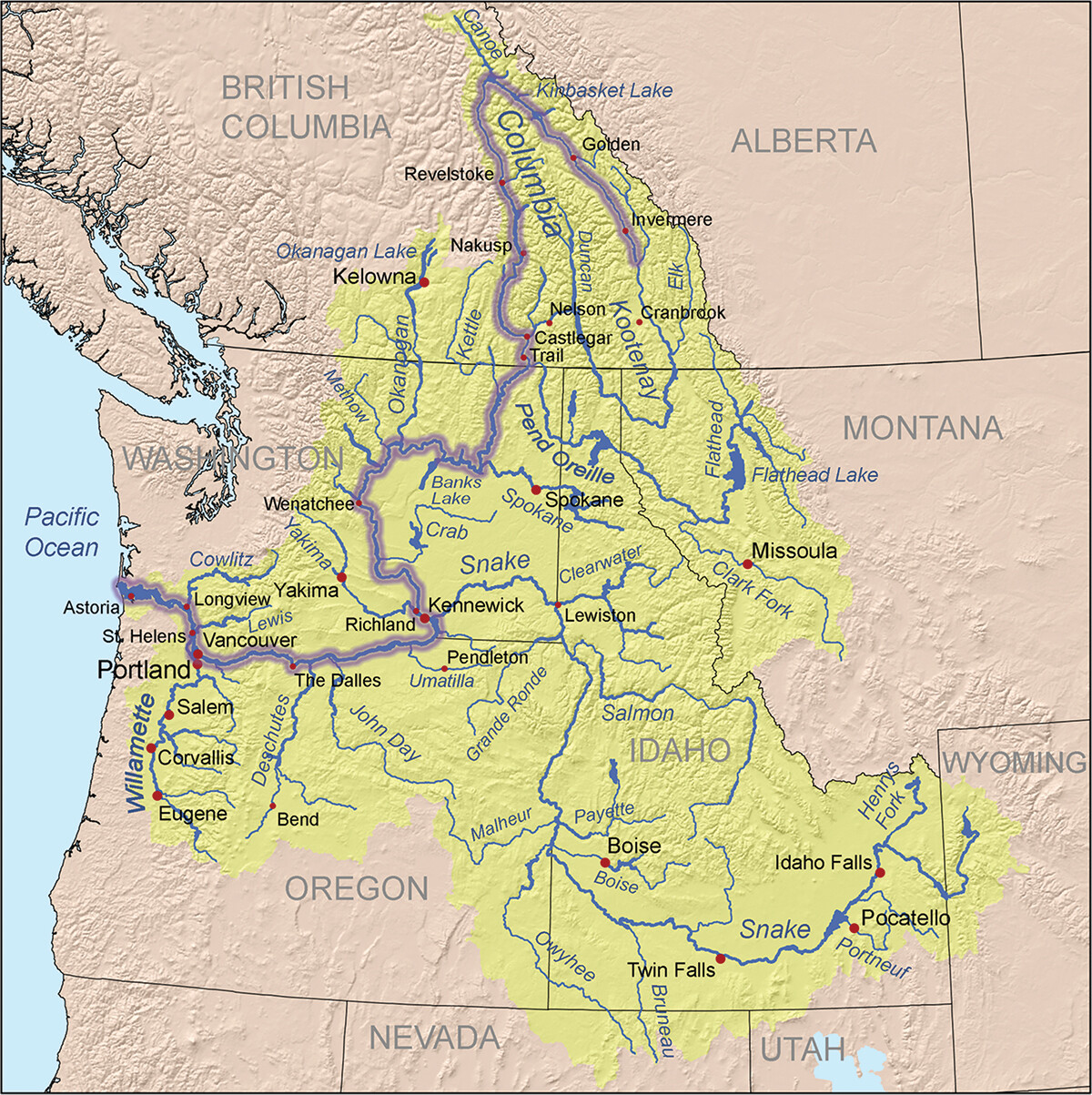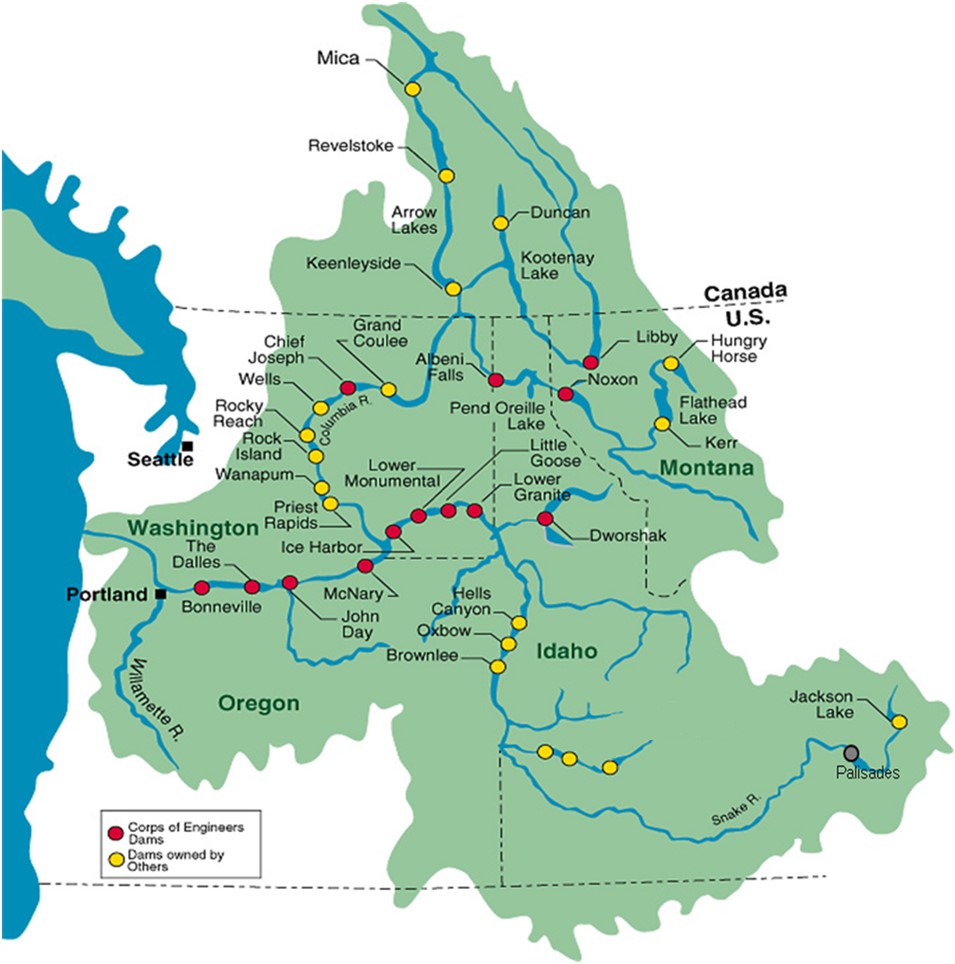Columbia River Treaty: US & Canada Challenges - Latest Updates
Can a river, a natural artery carving its way through continents, truly become a source of international tension? The Columbia River, a majestic waterway shared by the United States and Canada, is currently at the heart of complex challenges that demand innovative solutions and a renewed spirit of cooperation.
The Columbia River, stretching approximately 1,243 miles, isn't just a geographical feature; it's a lifeline. It fuels economies, nourishes ecosystems, and provides essential resources to communities across the Pacific Northwest. Its basin sprawls across parts of Washington, Oregon, Idaho, Montana, Wyoming, Nevada, and Utah in the United States, and extends into British Columbia in Canada. This shared resource, however, brings with it a web of interconnected challenges from managing water resources and hydroelectric power to addressing environmental concerns and indigenous rights. The complexities are further amplified by the historical context of the region, where the United States, once an independent nation, bordered a Canada that was then a British colony. The power dynamics, with the U.S. holding a larger economy and military, were balanced by Canada's rich natural resources and the peaceful resolution of border disputes.
| Topic | Information |
|---|---|
| Geographic Location | Pacific Northwest, spanning parts of Washington, Oregon, Idaho, Montana, Wyoming, Nevada, and Utah (USA), and British Columbia (Canada). |
| River Length | Approximately 1,243 miles (2,000 kilometers) |
| Basin Area | Roughly 260,000 square miles (673,000 square kilometers) |
| Significance | Source of hydroelectric power, irrigation, navigation, and diverse ecosystems. |
| Key Challenges | Water resource management, ecosystem preservation, flood control, hydroelectric power generation, and international cooperation. |
| Columbia River Treaty | Signed in 1961 (ratified in 1964), an agreement between the U.S. and Canada for coordinated flood control and hydroelectric power generation. |
| Modernization Efforts | Negotiations to modernize the Columbia River Treaty regime began in May 2018, addressing environmental concerns, indigenous perspectives, and evolving economic priorities. |
| Ecoregions (Oregon) | Coast Range, Willamette Valley, West Cascades, East Cascades, and Columbia Plateau. |
| River Flow | Primarily flows west, entering Washington and eventually emptying into the Pacific Ocean. Note: Other rivers, such as the Yukon River and Nile River, flow northward. |
| Yukon River Details | The Yukon River, while not directly related to the Columbia River challenges, is the third longest river in the United States at 1,980 miles, originating in Canada and flowing through Alaska. |
The Columbia River Treaty, initially signed in 1961 and ratified in 1964, serves as the cornerstone of cooperation between the United States and Canada regarding the river's management. The treaty spurred the construction of large hydroelectric dams, with three in Canada and one in the U.S., aiming to optimize electricity production and mitigate flood risks. While the treaty has undoubtedly yielded benefits, its original framework now faces scrutiny in the face of modern environmental and socio-economic demands. The treaty established coordination obligations between the two countries for flood risk management, hydroelectric energy production, and has provided environmental benefits in the Columbia River basin.
Negotiations to modernize the Columbia River Treaty regime began in May 2018, marking a significant step towards addressing the evolving needs of both nations and the river itself. As of January 2023, fifteen rounds of negotiations have taken place, reflecting a sustained commitment to developing a modernized treaty that serves the people of the Columbia River basin on both sides of the border. These negotiations aim to incorporate a broader range of considerations, including ecosystem preservation, indigenous perspectives, and the impacts of climate change.
One of the critical challenges lies in balancing the competing demands for the river's resources. Hydroelectric dams provide a vital source of clean energy, but they also alter the natural flow of the river, impacting fish populations and riparian habitats. Agriculture relies heavily on irrigation from the Columbia River, but excessive water withdrawals can strain water availability, especially during dry periods. The changing climate exacerbates these challenges, with warmer water temperatures affecting salmon migration patterns. For example, studies have shown that populations of pink salmon in Auke Creek, Alaska, and sockeye salmon in the Columbia River are migrating to spawn earlier than they did 40 years ago, a direct consequence of rising water temperatures. These changing conditions can disrupt the delicate balance of life cycle events, making growth or survival more difficult for aquatic species.
The Columbia River basin, a vast area encompassing parts of both the United States and Canada, presents a unique set of challenges for water resource management. Within Oregon alone, the Columbia River collects water from five distinct ecoregions, including the Coast Range, Willamette Valley, West Cascades, East Cascades, and Columbia Plateau. Each ecoregion has its own unique characteristics and water needs, adding complexity to the overall management of the river's resources.
The challenges extend beyond the physical environment. The Columbia River holds profound cultural and historical significance for indigenous communities who have lived along its banks for millennia. Their traditional ecological knowledge and perspectives are essential to finding sustainable solutions for the river's future. Modernizing the Columbia River Treaty requires meaningful engagement with these communities to ensure their voices are heard and their rights are respected.
The geopolitical landscape further complicates the situation. While the United States and Canada share a long history of cooperation, differences in national priorities and policy approaches can create friction. The historical context, where the United States had a larger economy and military while Canada served as a source of natural resources, continues to shape the dynamics of the relationship. However, the commitment to resolving border disputes according to the rule of law and peaceful means has been a constant throughout history, providing a foundation for continued cooperation.
Several factors complicate the attempts to resolve the Columbia River challenges that arise. In 2025, on March 25, Adrian Dix, the Minister of Energy and Climate Solutions and the Minister responsible for the Columbia River Treaty, hosted a virtual information session to update the public on the status of the Columbia River Treaty modernization process. The session included a Q&A to address new developments from the United States. This level of transparency and public engagement is crucial for building trust and fostering consensus around the future of the Columbia River.
While the Columbia River presents numerous challenges, it also offers opportunities for innovation and collaboration. By embracing a holistic approach that considers environmental, economic, social, and cultural factors, the United States and Canada can forge a path towards a more sustainable and equitable future for the Columbia River basin. This requires a willingness to adapt to changing circumstances, to learn from past mistakes, and to prioritize the long-term health of the river and the communities that depend on it. The potential benefits are immense a thriving ecosystem, a reliable source of clean energy, and a strengthened partnership between two nations.
It's important to remember that the Columbia River is just one example of the many shared water resources around the world that face similar challenges. Several rivers, including the Nile River and the Yukon River, traverse international borders, requiring cooperation and careful management to ensure their sustainability. The lessons learned from the Columbia River can inform efforts to address water resource challenges in other regions, promoting peace, prosperity, and environmental stewardship on a global scale.
The Yukon River, for example, is the third longest river in the United States, stretching 1,980 miles from its source at Llewellyn Glacier in Canada to its mouth in the Bering Sea in Alaska. While the Columbia River flows primarily west, the Yukon River flows north, highlighting the diverse hydrological landscapes of North America. Comparing the challenges and management approaches of these different rivers can provide valuable insights for addressing water resource issues in various contexts.
The Columbia River flows west into Washington and the Pacific. When the United States and Canada asked to investigate if greater use of the Columbia River system would be beneficial, the Northwestern Division Army Corps looked at it. The map shows the size of the Columbia River basin with a dark colored area.

Columbia River's U.S. Canada Challenges Arise A Deep Dive Into The

Exploring the Mighty Columbia River

Columbia River's U.S. Canada Challenges Arise A Deep Dive Into The